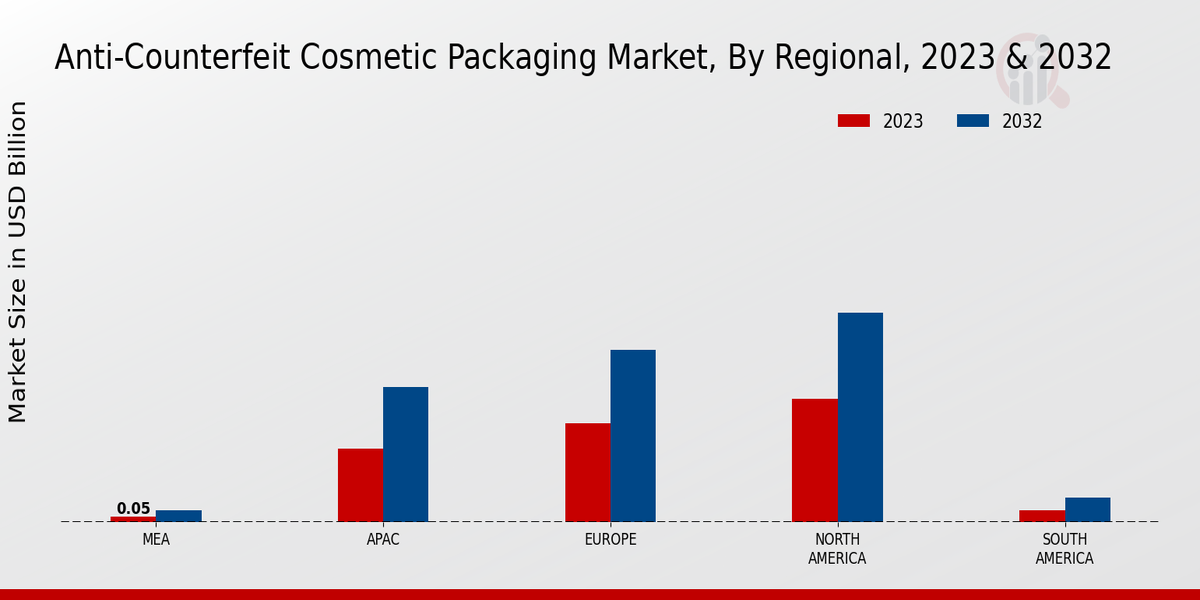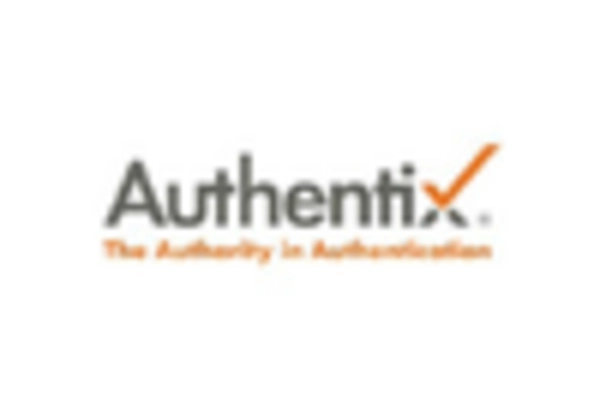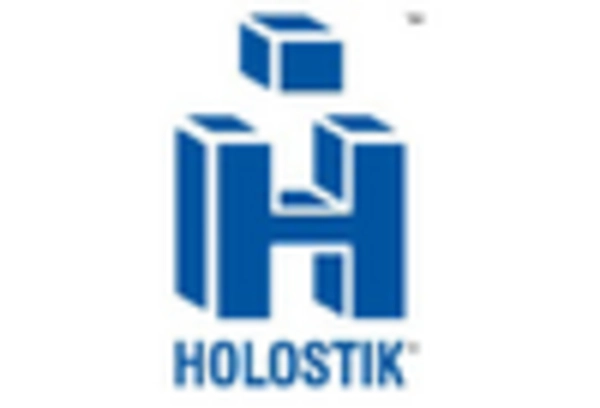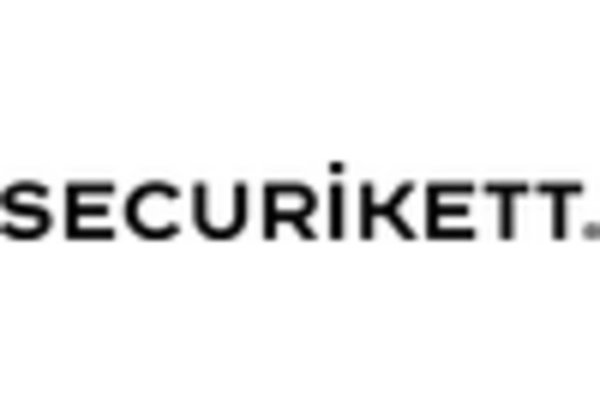Regulatory Compliance and Standards
The Anti Counterfeit Cosmetic Packaging Market is significantly influenced by the increasing regulatory compliance requirements imposed on cosmetic manufacturers. Governments and regulatory bodies are implementing stringent guidelines to ensure product safety and authenticity, which necessitates the adoption of anti-counterfeit packaging solutions. Compliance with these regulations not only protects consumers but also helps brands avoid legal penalties and reputational damage. As regulations evolve, companies are compelled to invest in innovative packaging technologies that meet these standards. The market for anti-counterfeit packaging is projected to expand as manufacturers seek to align with regulatory expectations. This trend underscores the importance of compliance in driving the growth of the Anti Counterfeit Cosmetic Packaging Market, as brands recognize the need to safeguard their products against counterfeiting while adhering to legal requirements.
Rising Incidence of Counterfeit Products
The proliferation of counterfeit cosmetic products poses a significant threat to consumer safety and brand integrity, thereby driving the Anti Counterfeit Cosmetic Packaging Market. Reports indicate that the counterfeit cosmetics market is valued at billions of dollars, with a substantial portion of these products being sold online. This alarming trend has prompted brands to adopt anti-counterfeit packaging solutions to protect their products and consumers. The increasing awareness among consumers regarding the dangers of counterfeit cosmetics is also contributing to the demand for secure packaging. As brands face potential legal repercussions and loss of reputation due to counterfeit incidents, the urgency to implement effective anti-counterfeit measures is more pronounced than ever. Consequently, the Anti Counterfeit Cosmetic Packaging Market is likely to witness robust growth as companies prioritize the protection of their brand and consumer trust.
Competitive Pressure and Brand Protection
The competitive landscape within the cosmetic industry is intensifying, prompting brands to prioritize the protection of their intellectual property and market share. The Anti Counterfeit Cosmetic Packaging Market is benefiting from this competitive pressure, as companies seek to differentiate themselves through secure packaging solutions. Brands are increasingly aware that counterfeit products not only undermine their reputation but also erode consumer trust. As a result, there is a growing emphasis on implementing anti-counterfeit measures that enhance brand integrity. Market analysis suggests that companies investing in advanced packaging technologies are likely to gain a competitive edge, as consumers gravitate towards brands that demonstrate a commitment to authenticity. This competitive dynamic is expected to drive innovation and growth within the Anti Counterfeit Cosmetic Packaging Market, as brands strive to protect their assets and maintain consumer loyalty.
Consumer Awareness and Demand for Authenticity
In the contemporary marketplace, consumers are becoming increasingly aware of the risks associated with counterfeit cosmetics, which is significantly influencing the Anti Counterfeit Cosmetic Packaging Market. A growing segment of consumers actively seeks products that guarantee authenticity and safety, leading brands to invest in anti-counterfeit packaging solutions. Surveys indicate that a considerable percentage of consumers are willing to pay a premium for products that offer verifiable authenticity. This shift in consumer behavior is compelling manufacturers to adopt advanced packaging technologies that provide clear indicators of product legitimacy. As a result, the demand for anti-counterfeit solutions is expected to rise, with the Anti Counterfeit Cosmetic Packaging Market adapting to meet these evolving consumer expectations. The emphasis on transparency and authenticity is likely to shape the future of cosmetic packaging.
Technological Innovations in Anti Counterfeit Solutions
The Anti Counterfeit Cosmetic Packaging Market is experiencing a surge in technological innovations aimed at combating counterfeit products. Advanced technologies such as blockchain, QR codes, and RFID are being integrated into packaging solutions to enhance product traceability and authenticity verification. For instance, the implementation of blockchain technology allows for a secure and immutable record of a product's journey from manufacturer to consumer. This not only helps in identifying counterfeit goods but also builds consumer trust. As per recent estimates, the market for anti-counterfeit packaging solutions is projected to grow at a compound annual growth rate of over 15% in the coming years, driven by these technological advancements. Companies are increasingly investing in research and development to create more sophisticated anti-counterfeit measures, thereby propelling the growth of the Anti Counterfeit Cosmetic Packaging Market.


















Leave a Comment